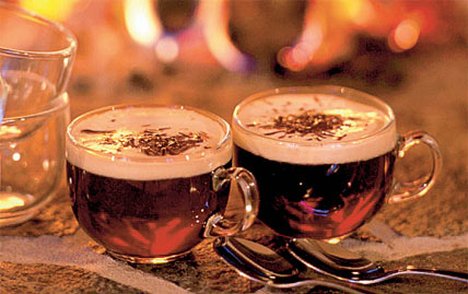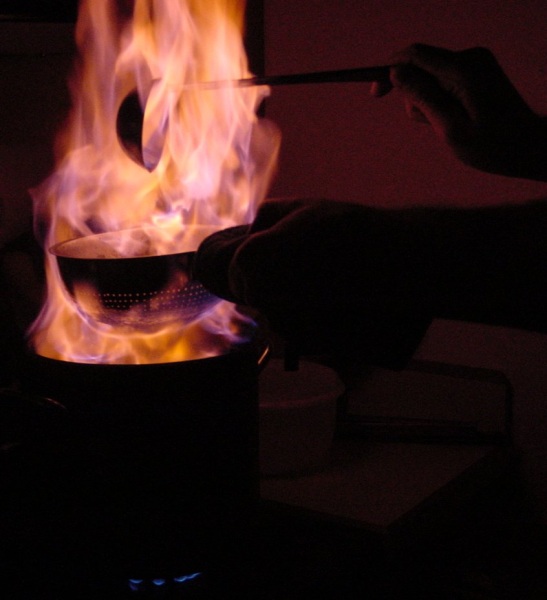Glögg
 The Swedish word for mulled wine, Glögg, comes from the verb ‘to heat up.’ The term glödgat vin, literally meaning ‘heated wine,’ first appeared in Sweden in 1609. By that time, many European countries had stopped drinking spiced wine, but the tradition has survived in some places, including Sweden. In the 1890s mulled wine became a Swedish Christmas Tradition and spread more and more widely.
The Swedish word for mulled wine, Glögg, comes from the verb ‘to heat up.’ The term glödgat vin, literally meaning ‘heated wine,’ first appeared in Sweden in 1609. By that time, many European countries had stopped drinking spiced wine, but the tradition has survived in some places, including Sweden. In the 1890s mulled wine became a Swedish Christmas Tradition and spread more and more widely.
Glögg is the Nordic form of mulled wine, similar to Glühwein in German-speaking countries. Glühwein is usually prepared from red wine, heated and spiced with cinnamon sticks, vanilla pods, cloves, citrus and sugar. Almonds and raisins are often added to the Scandinavian version, though not to the German. Fruit wines such as blueberry wine and cherry wine are sometimes used instead of grape wine in Germany. The oldest Glühwein tankard is documented in the high noble German and first Riesling grower of the world, Count John IV, of Katzenelnbogen around 1420. This gold-plated lockable silver tankard imitating the traditional wine woven wooden can is called Welcome. In Romania it is called vin fiert ("boiled wine"), and can be made using either red or white wine, sometimes adding peppercorn. In Moldova the izvar is made from red wine with black pepper and honey. In Italy, mulled wine is typical in the northern part of the country and is called vin brulè.
Glögg is a traditional drink of the Swedish & Finnish Advent season - Advent being the six weeks leading up to the Birth of Christ on the 25th of December. Glögg is traditionally made with red wine, and each small glass has a few almonds and raisins in it as well as the drink. December in this region is a dark, wintry time, and this hot drink helps keep the spirits cheered. Glögg's origins are with mulled wine - wine heated with spices. Mulled wine was known to medieval Europeans and celebrated from at least 400AD. In the 1800s, a special mulled wine was popular in Europe known as "Glühwein," which began to incorporate the special Glögg ingredients - raisins and almonds. Glögg also tends to have more sugar as well as a heavier alcohol content. Given the frigid winters seen in Scandanavia, this can be quite necessary! Flaming Glögg 1 bottle red wine Put wine, aquavit, cardamom, cloves, cinnamon, figs, raisins, almonds and orange into a pot. Simmer until almost boiling. Remove from heat. Put sugar in sieve, dip into liquid. Light with match and burn until gone. Cover to put out flame. Serve liquid warm, putting a few raisins and almonds into each glass. Gingersnaps, Gingerbread, and cinnamon rolls are pairings associated with glogg.
Gingersnaps, Gingerbread, and cinnamon rolls are pairings associated with glogg.
1 bottle aquavit (like a flavored vodka)
10 whole cardamoms
5 whole cloves
2 sticks of cinnamon
4 figs
1 cup raisins
1 cup blanched almonds
1 orange skin, dried
1/2 lb sugar cubes


